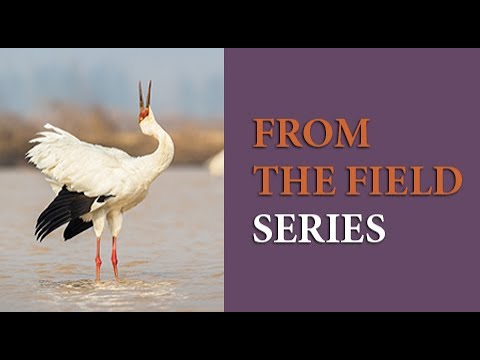– The critical status of Siberian cranes and the factors contributing to their decline
– Conservation strategies and collaborative efforts for the Siberian cranes’ recovery
– The role of technology and research in enhancing Siberian crane conservation
– Engaging local communities and global audiences for the sustainable future of Siberian cranes
– The impact of climate change on Siberian crane habitats and migration patterns
Siberian cranes, known scientifically as Leucogeranus leucogeranus, are among the world’s most endangered bird species. Their stark white plumage and elegant stature make them a majestic sight in their natural habitats, ranging from Siberia’s Arctic tundras to the wetlands of Iran, India, and China. However, these graceful birds face numerous threats that have pushed them to extinction. Understanding these challenges is the first step in crafting effective conservation solutions.
Their populations have declined for decades due to habitat destruction, environmental pollution, and climate change. Wetland draining for agriculture and urban development has reduced these birds’ available feeding and breeding grounds. Additionally, climate change has led to unpredictable weather patterns, further disrupting their migratory routes and breeding cycles.
Conservation efforts for Siberian cranes have been multifaceted and international in scope. Several organizations, including the International Crane Foundation and the World Wildlife Fund, have joined forces to develop strategies to reverse the declining trend of Siberian crane populations. These strategies include habitat restoration, stringent anti-poaching laws, and captive breeding programs. The latter has shown promise in increasing numbers and reintroducing these birds into their native habitats.
Technological advancements have played a pivotal role in Siberian crane conservation. Satellite tracking devices attached to the cranes allow researchers to monitor their migration patterns, habitat preferences, and survival rates. This data is crucial for better protecting these birds and their habitats. Moreover, genetic research is helping scientists understand the genetic diversity within the remaining populations, guiding breeding programs to ensure healthy, viable offspring.
Local community engagement is another pillar of successful conservation. Educating and involving communities living near crane habitats in conservation efforts leads to more sustainable outcomes. Initiatives such as ecotourism provide economic benefits to these communities, incentivizing them to protect Siberian cranes and their habitats. Additionally, awareness campaigns help reduce human-induced threats to these birds, such as hunting and egg collection.
Finally, the impacts of climate change on Siberian crane habitats and migratory patterns cannot be overstated. Rising temperatures and altered precipitation patterns affect the availability of water in wetlands, which is crucial for the cranes’ survival during migration and breeding. Conservation efforts must, therefore, also focus on combating climate change through habitat restoration projects that enhance ecosystem resilience and policies that reduce carbon emissions globally.
Working together for a bright future for Siberian cranes involves a comprehensive approach that addresses the immediate threats to their survival while tackling broader environmental issues. It requires the collaboration of scientists, conservationists, governments, local communities, and the global audience. Each group plays a vital role in crafting and implementing solutions that benefit Siberian cranes and contribute to global biodiversity and ecosystem health. Engaging more individuals and groups in this cause is crucial for ensuring these iconic birds grace our skies for future generations.
Through targeted conservation strategies, technological innovation, community involvement, and climate action, it is possible to change the narrative for Siberian cranes from one of decline to one of recovery and hope. The journey is complex and challenging, but a bright future for Siberian cranes is within reach with persistent efforts and international collaboration. This endeavor not only seeks to save a single species but also underscores the importance of preserving our planet’s natural heritage for the well-being of all its inhabitants.
*****
Source Description
https://savingcranes.org/webinars/ On Thursday, March 16, at 11 a.m. Central Time, join our colleague Dr. Hongxing Jiang, Deputy Director and Associate Researcher of the National Bird Banding Center of China, for the webinar, Working Together for a Bright Future for Siberian Cranes.
Hongxing will share what we have learned through tracking and research on the Critically Endangered Siberian Crane, why these studies are important, and how this research informs the next steps needed to conserve this fragile species and its habitats.
Hongxing will be joined by International Crane Foundation staff: Claire Mirande, Asia Program Manager, Crawford Prentice, Vice President International – Asia, and Zhiwei Guo, China Program Officer. Zhiwei is working on his Master’s degree at Louisiana State University, studying wetland hydrology and management and will apply these skills to critical wetlands in China.
Sponsored by The Avery Family.


